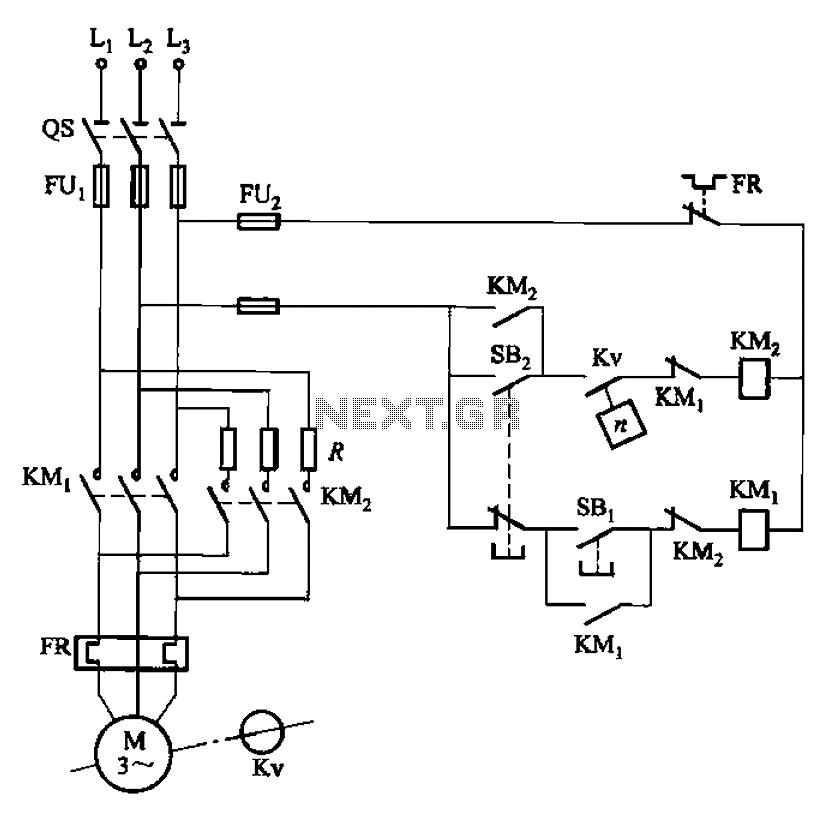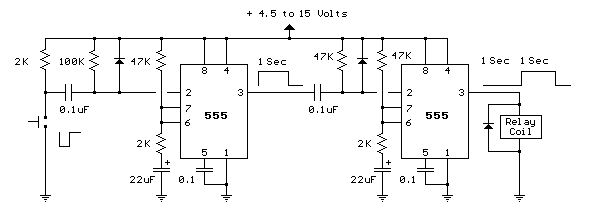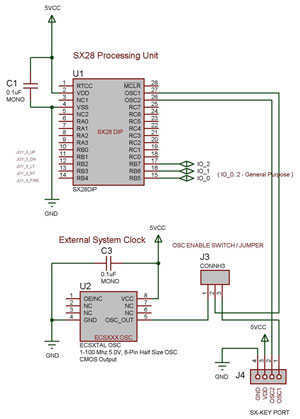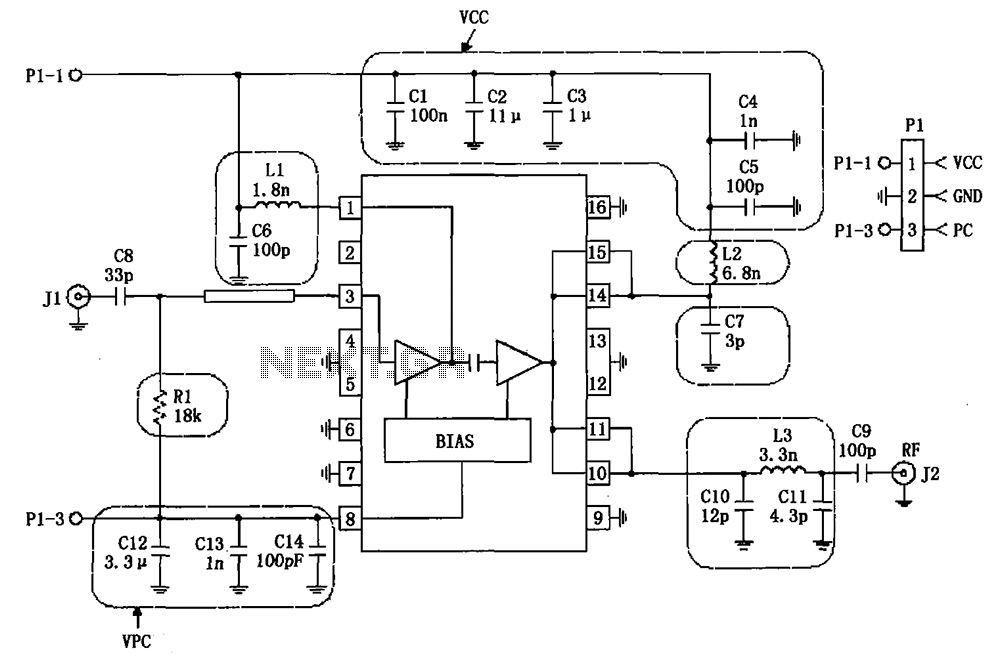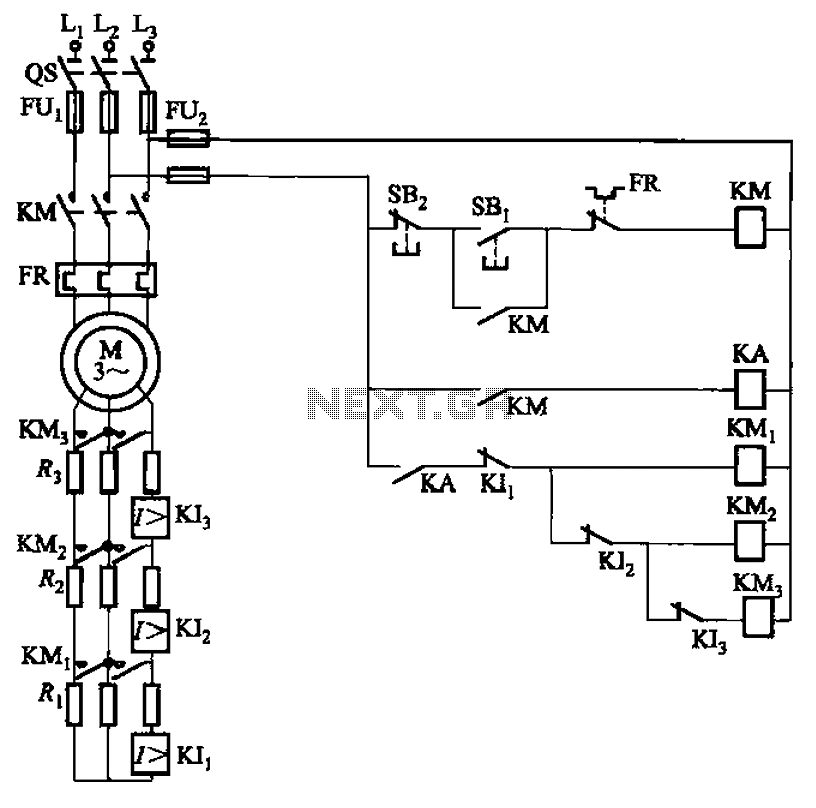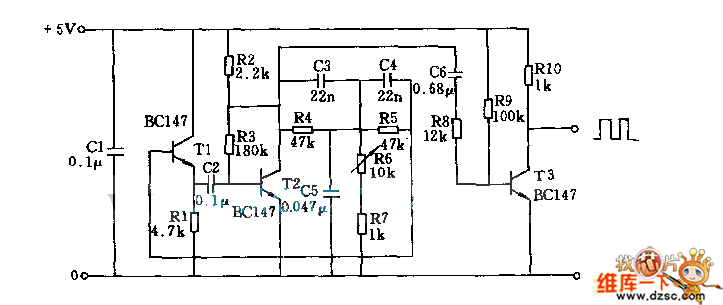
Complementary symmetry push-pull circuit
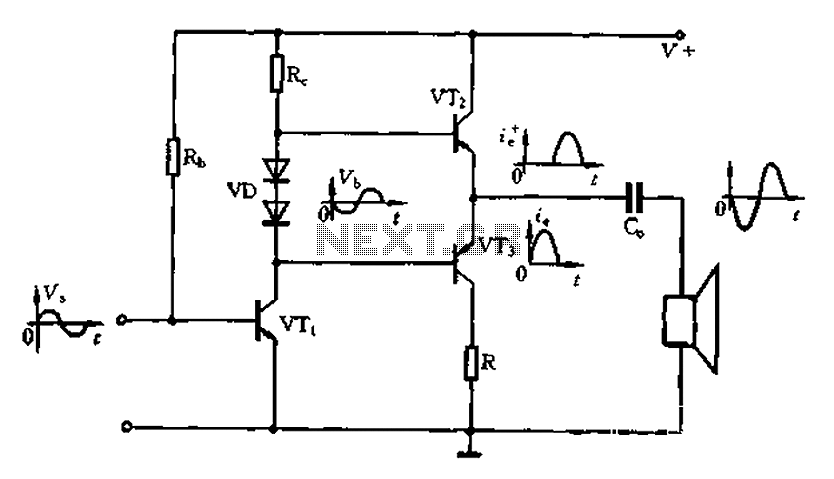
The Class A power amplifier exhibits low distortion; however, it suffers from low efficiency and limited output power, prompting the design of Class B power amplifier circuits. The Class B amplifier operates by shifting the operating point of the transistor from a midpoint (Q) downward to a static-free base (Q2), allowing the transistor to be biased only when an input signal is present. This configuration enables the transistor to conduct during the positive half-cycle of the input signal, resulting in a collector current that is significantly larger than that of Class A amplifiers. However, the transistor does not operate during the negative half-cycle, leading to notable distortion in the output signal. To mitigate this issue, the Class B push-pull amplifier circuit employs two output transistors, an NPN transistor (VT2) and a PNP transistor (VT3), which work alternately. During the positive half-cycle, the PNP transistor (VT3) conducts, while during the negative half-cycle, the NPN transistor (VT2) is activated. This arrangement allows for the generation of output signals during both halves of the input cycle, ultimately combining these signals to produce a complete output. The absence of complementary transistors in this design is why it is referred to as a complementary symmetry push-pull output configuration.
The Class B power amplifier circuit is characterized by its push-pull configuration, which effectively reduces distortion by ensuring that each transistor only amplifies one half of the input signal cycle. This method not only enhances the overall efficiency of the amplifier but also increases the output power compared to Class A amplifiers. The operation of the transistors is controlled by the input signal, with biasing techniques employed to ensure that each transistor remains in the cutoff region when not conducting.
In practical implementations, the circuit typically includes biasing resistors, coupling capacitors, and feedback mechanisms to stabilize the gain and improve linearity. The output stage may also incorporate additional components such as output transformers or filters to match the load impedance and remove unwanted high-frequency noise. The careful selection and arrangement of these components are crucial for optimizing performance, minimizing crossover distortion, and achieving a smooth transition between the conduction of the two transistors.
Overall, the complementary symmetry push-pull amplifier offers a robust solution for applications requiring efficient amplification with manageable distortion levels, making it a popular choice in audio amplification and various electronic devices. Class A power amplifier distortion, although low, but its low efficiency and output power is small, so people designed B power amplifier circuit. B amplifier circuit is to work from the middle point Q moves down to the position Q2, that is static -free base of the transistor bias, b 00 only when the input signal is the role of the transistor is turned on before work. It works when the maximum collector current of the magnitude of the current class Bijia much larger output.
But it is only in the positive half cycle of the signal t is not a negative half-cycle work. This causes serious distortion of the output signal o this end, the B push-pull amplifier circuit uses the output of work, consisting of two alternating work tube output, l-140 one of the circuit shown by the NPN transistor VTz and a PNP tube VT3 composition. In the positive half cycle signal VT. 3 work, negative half cycle of the signal VT2 tube in two output tubes, respectively, the output signal of the positive and negative half-cycle, the last in a complete synthesis of the total output of the output signal of the circuit o taken with two different polarities its lack of complementary transistors, so this circuit is called complementary symmetry push-pull output path.
The Class B power amplifier circuit is characterized by its push-pull configuration, which effectively reduces distortion by ensuring that each transistor only amplifies one half of the input signal cycle. This method not only enhances the overall efficiency of the amplifier but also increases the output power compared to Class A amplifiers. The operation of the transistors is controlled by the input signal, with biasing techniques employed to ensure that each transistor remains in the cutoff region when not conducting.
In practical implementations, the circuit typically includes biasing resistors, coupling capacitors, and feedback mechanisms to stabilize the gain and improve linearity. The output stage may also incorporate additional components such as output transformers or filters to match the load impedance and remove unwanted high-frequency noise. The careful selection and arrangement of these components are crucial for optimizing performance, minimizing crossover distortion, and achieving a smooth transition between the conduction of the two transistors.
Overall, the complementary symmetry push-pull amplifier offers a robust solution for applications requiring efficient amplification with manageable distortion levels, making it a popular choice in audio amplification and various electronic devices. Class A power amplifier distortion, although low, but its low efficiency and output power is small, so people designed B power amplifier circuit. B amplifier circuit is to work from the middle point Q moves down to the position Q2, that is static -free base of the transistor bias, b 00 only when the input signal is the role of the transistor is turned on before work. It works when the maximum collector current of the magnitude of the current class Bijia much larger output.
But it is only in the positive half cycle of the signal t is not a negative half-cycle work. This causes serious distortion of the output signal o this end, the B push-pull amplifier circuit uses the output of work, consisting of two alternating work tube output, l-140 one of the circuit shown by the NPN transistor VTz and a PNP tube VT3 composition. In the positive half cycle signal VT. 3 work, negative half cycle of the signal VT2 tube in two output tubes, respectively, the output signal of the positive and negative half-cycle, the last in a complete synthesis of the total output of the output signal of the circuit o taken with two different polarities its lack of complementary transistors, so this circuit is called complementary symmetry push-pull output path.
